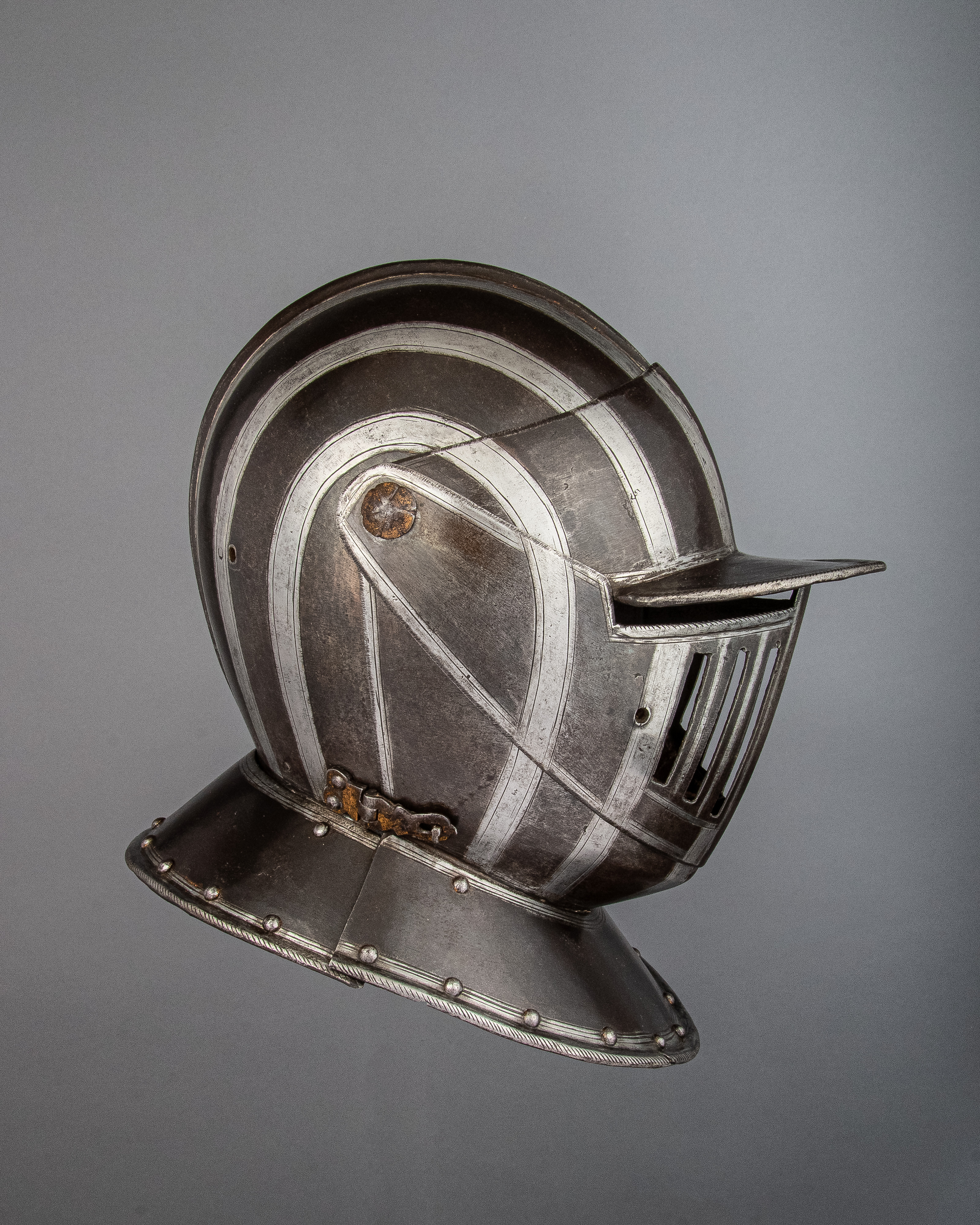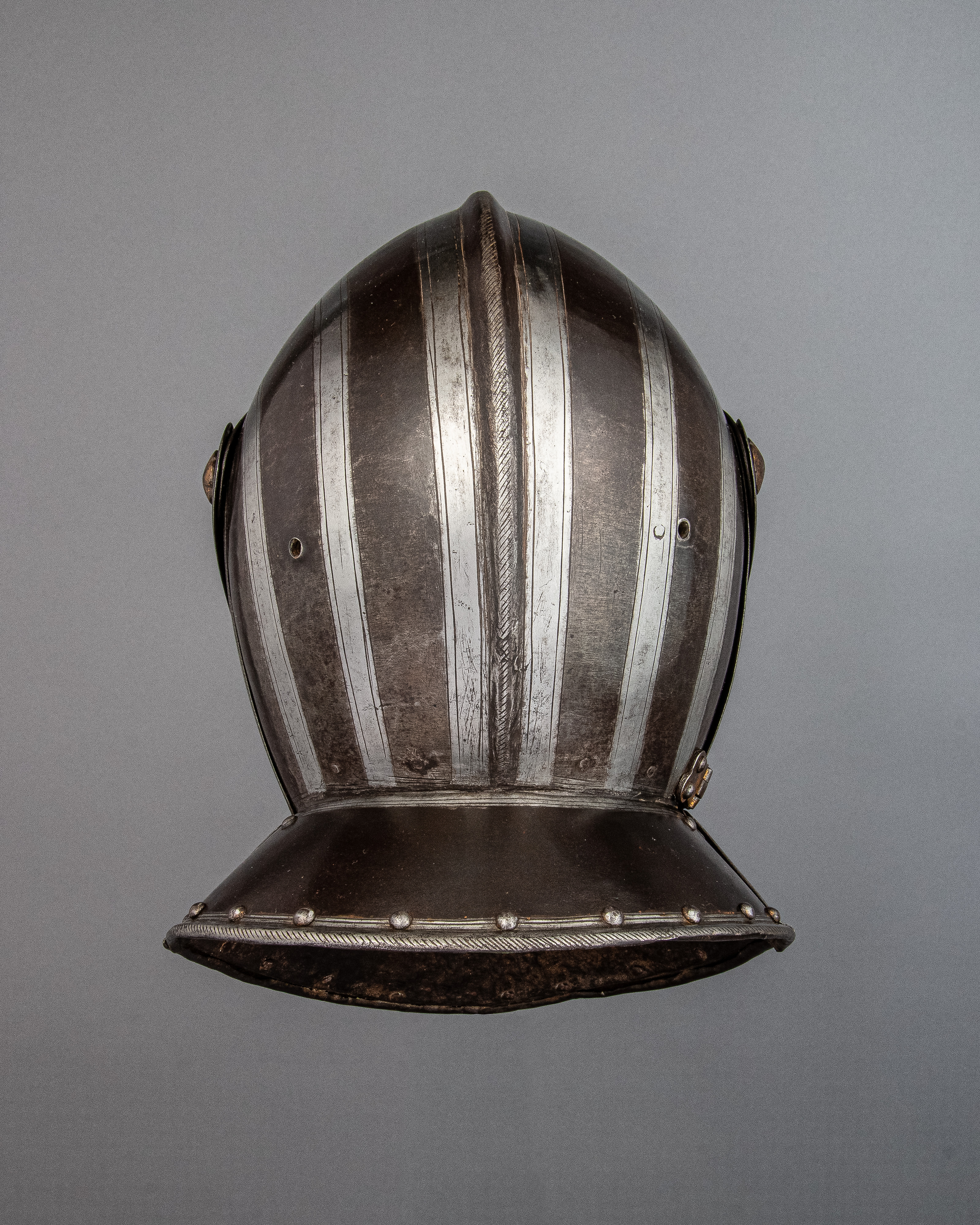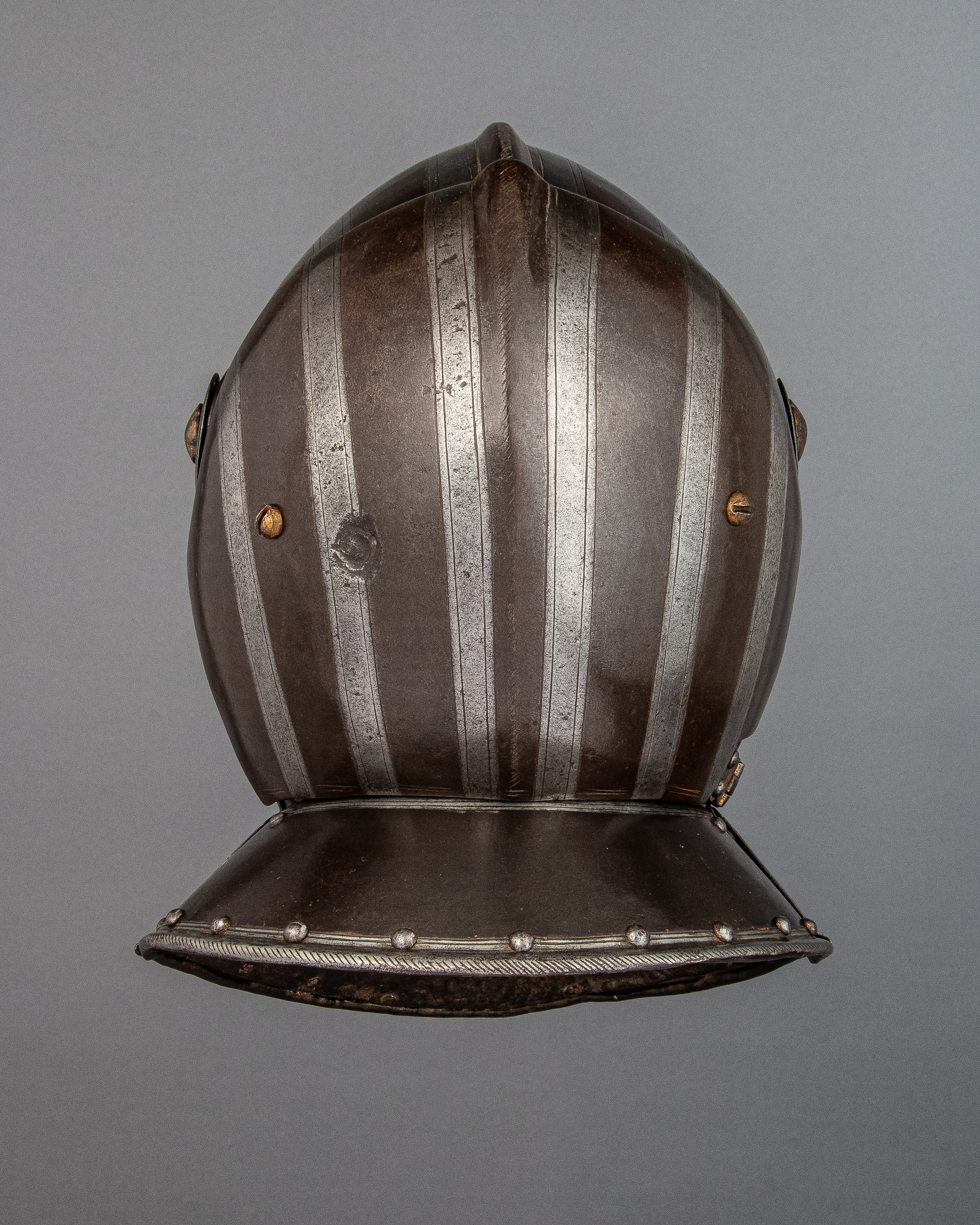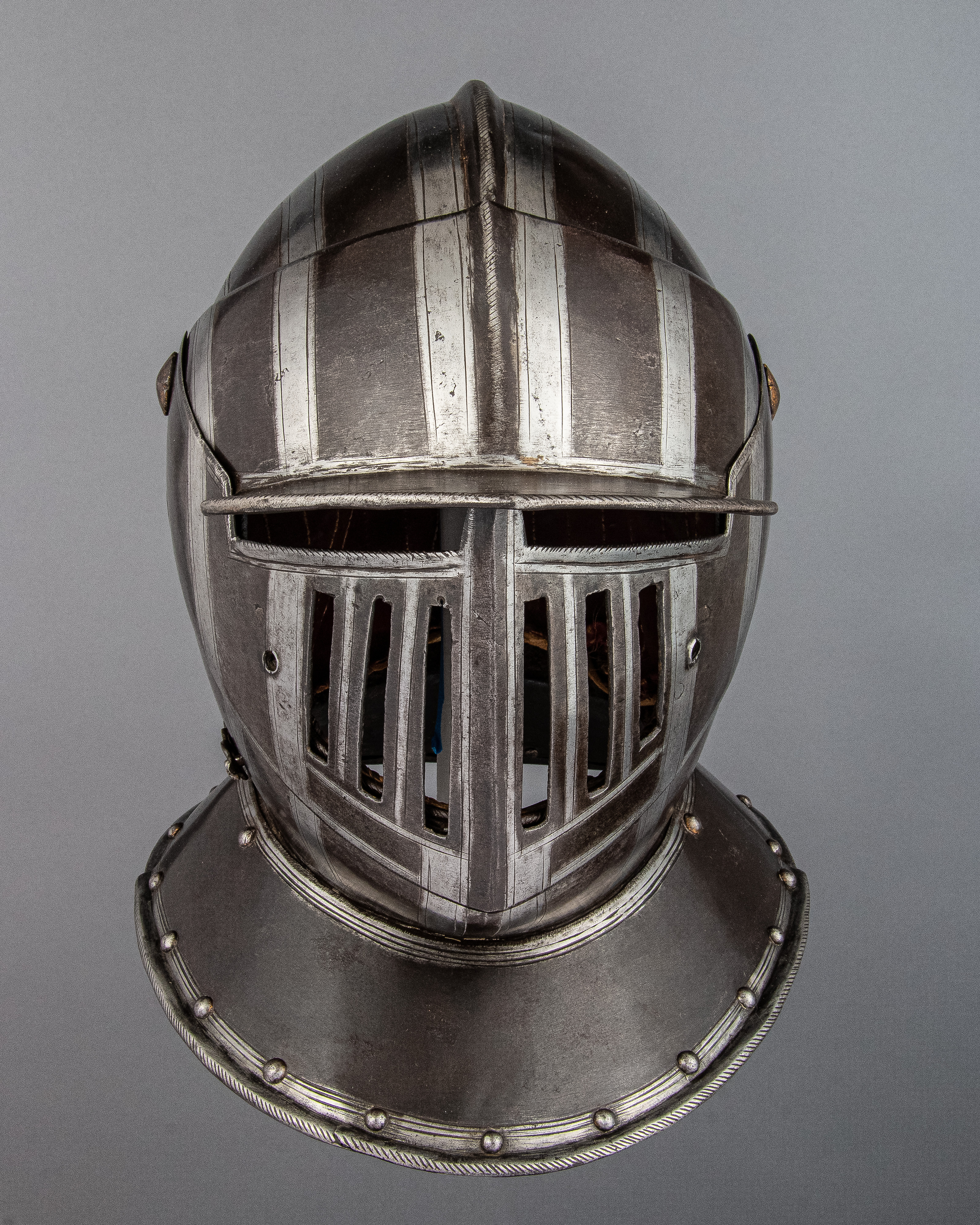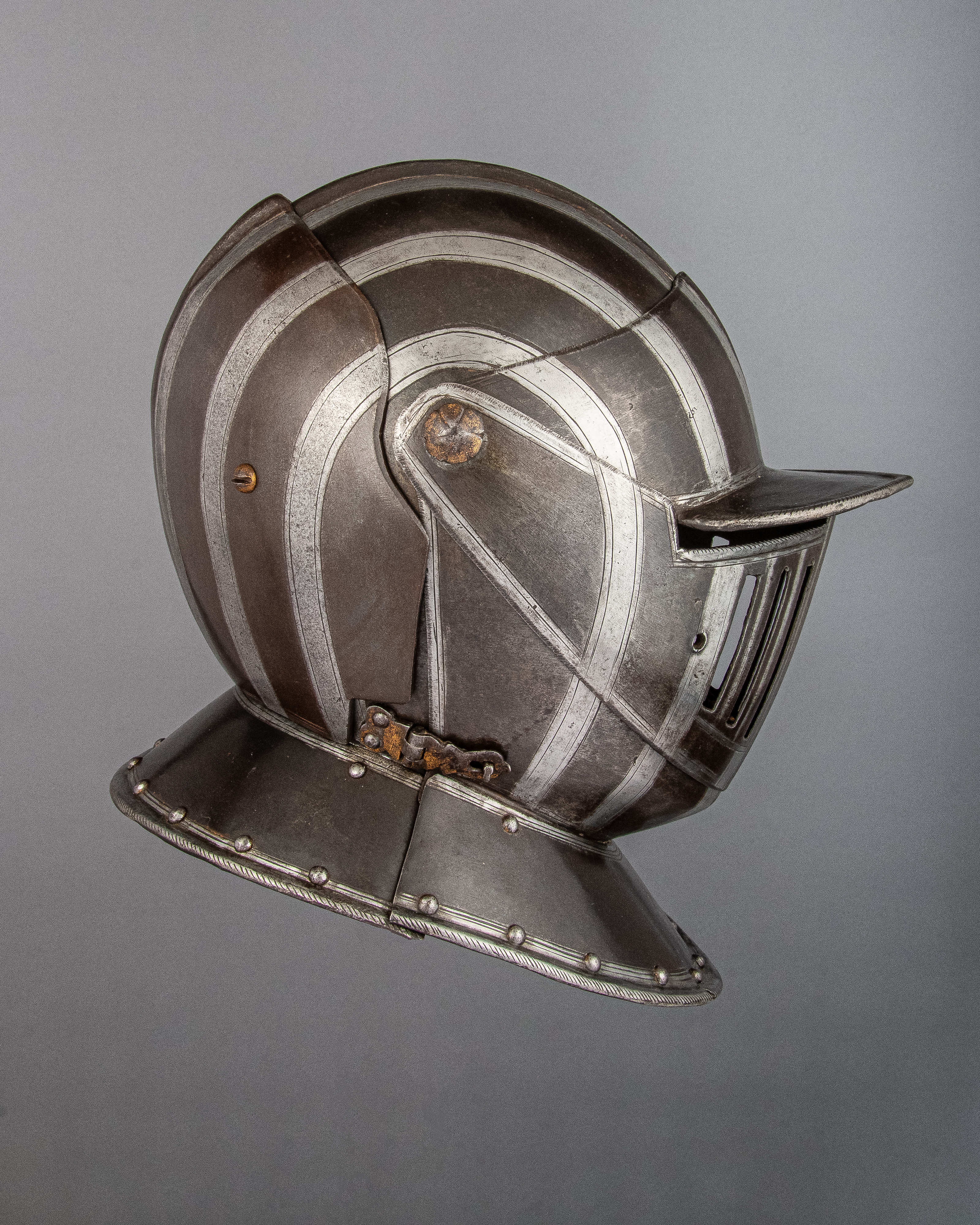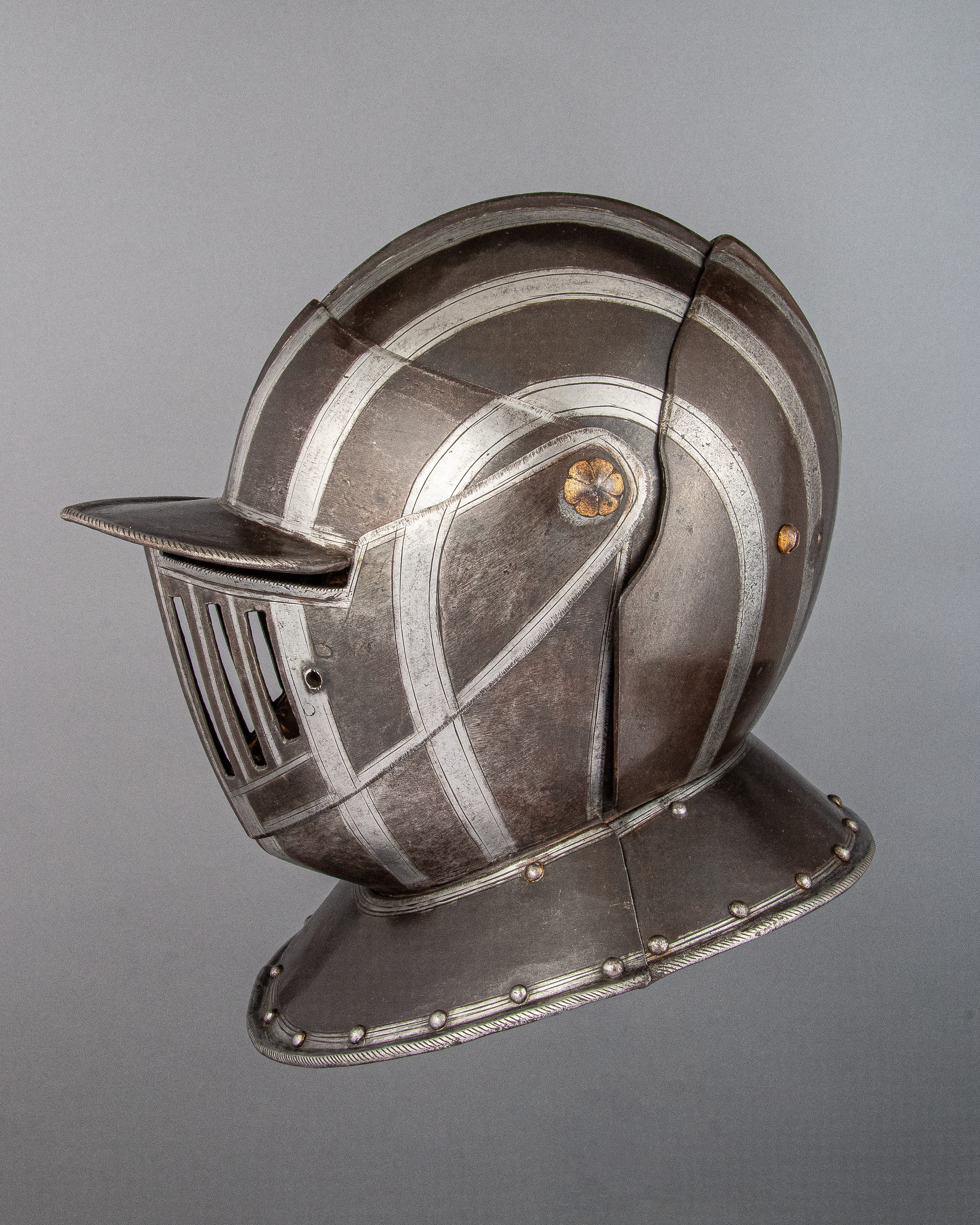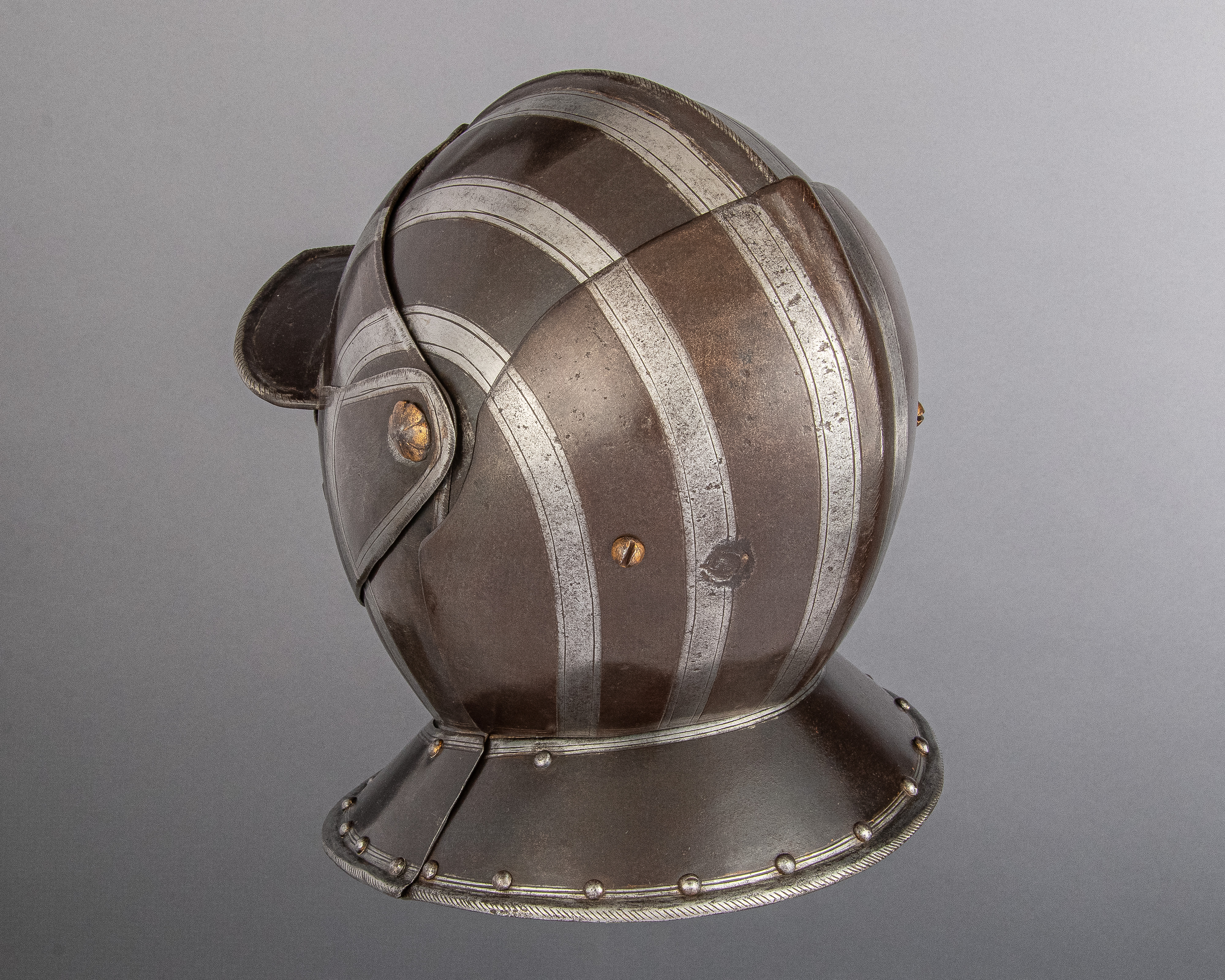Cuirassier Armor
The construction and build of this armor are typical of a cuirassier’s harness, a type developed toward the end of the sixteenth century in response to the growing use and efficiency of firearms. The advent of firearms caused armorers to increase the thickness and weight of plates and to supplement them with separate reinforcing plates. Before an armor of this type was finished, it was fired at with a pistol or musket to test its effectiveness against bullets, and the bullet dents were left as a guarantee of the strength and quality of its steel. This particular armor retains two reinforces with such dents, a rarely encountered plate for the back of the helmet bowl, and a plackard for the breastplate; it formerly possessed a third plate for the front of the visor. Weighing more than eighty-six pounds, it is one of the heaviest field armors known.
Although generally conforming to the construction of cuirassier harnesses worn throughout Europe about 1600 to 1640, this example is more characteristic of northern Italian (Milan or Brescia) workmanship. The armor’s weight, its reinforcing plates, and the deep “proof marks” provide a vivid reminder of the constant struggle to adapt armor to changes in tactics and weaponry as well as fashion.
Due to rights restrictions, this image cannot be enlarged, viewed at full screen, or downloaded.
This artwork is meant to be viewed from right to left. Scroll left to view more.


